Birds of New Mexico: 21 Must-See Species
Bordered by Texas, Arizona, and Colorado — three of the top birding destinations in the United States — New Mexico is often overlooked by out-of-state birdwatchers seeking new adventures. But the “Land of Enchantment” is very much a birding hotspot in its own right. Located at the intersection of several major biomes, the state includes parts of the western Great Plains, Chihuahuan Desert, Rocky Mountains, Great Basin Desert, and Madrean Sky Islands.
With 549 species, New Mexico has the fourth highest state list of any U.S. state, a total made doubly impressive by the fact that it sits hundreds of miles from the nearest ocean.
As life, hopefully, begins to return to normal this year, here are 21 birds to look for in New Mexico in 2021. Be forewarned: The species get progressively harder to find as you continue down the list!
21. Greater Roadrunner
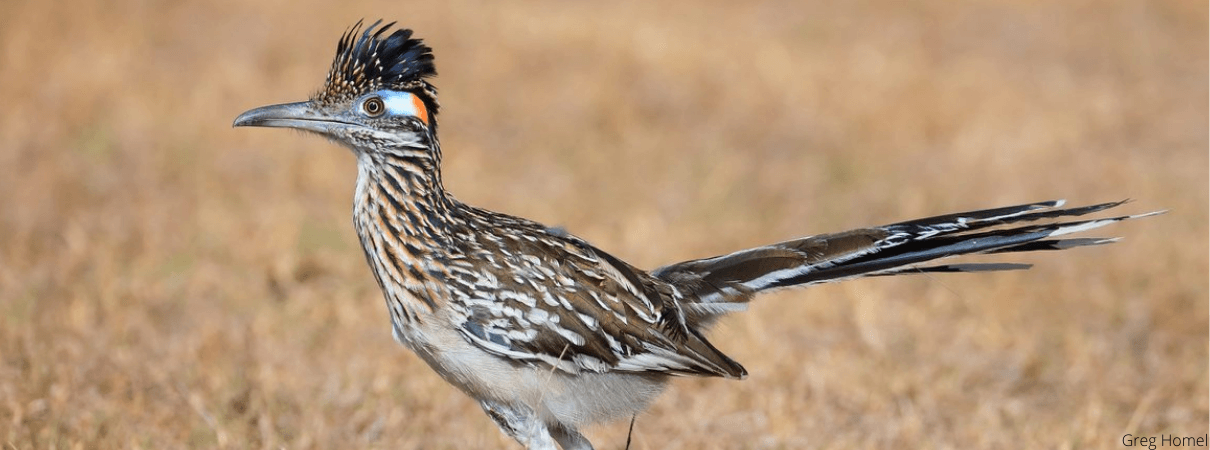
Greater Roadrunner. Photo by Greg Homel.
Perhaps no species evokes images of the desert Southwest more than the Greater Roadrunner. Widespread in New Mexico, roadrunners are common in some Albuquerque neighborhoods, and will even visit feeders to eat mealworms. In the early morning, roadrunners can often be seen perched with their feathers puffed out on rocks or fence posts bathed in sunlight. This behavior, called sunbathing, is one of the ways that roadrunners have adapted to the extremes of life in the desert. At night, desert temperatures can get so cold that roadrunners will go into a state of torpor. Sunbathing in the morning allows the birds to bring their body temperature back up without using too much energy. To help with this, the skin on a roadrunner's back is black, maximizing the bird's ability to absorb the sun's warmth. In addition to the birds themselves, keep an eye out for the many ways in which roadrunners are depicted around New Mexico. The state bird, the Greater Roadrunner appears on everything from souvenir coffee mugs to city murals. Its likeness is even painted on the cars of the Albuquerque-Santa Fe trainline, which is called the Rail Runner.
Location: The Greater Roadrunner is widely distributed across the state and often thrives in suburban settings.
20. Dark-eyed Junco

"Slate-colored" Dark-eyed Junco. Photo by William Cushman/Shutterstock.
The familiar Dark-eyed Junco is a bit more complex in the Mountain West. Rather than just one variety of Dark-eyed Junco, as is the case in most of eastern North America and along the West Coast, New Mexico has several. In fact, New Mexico is one of the only states where it is possible to see all seven varieties of Dark-eyed Junco that occur in the United States: Gray-headed, Pink-sided, Red-backed, Oregon, Slate-colored, White-winged, and Cassiar. Winter is the best time to appreciate junco diversity. In the spring and summer, the variety thins out, with only Gray-headed and Red-backed Juncos breeding in the state.
Location: Dark-eyed Juncos are widely distributed across New Mexico, with the greatest variety in winter.
19. Sandhill Crane
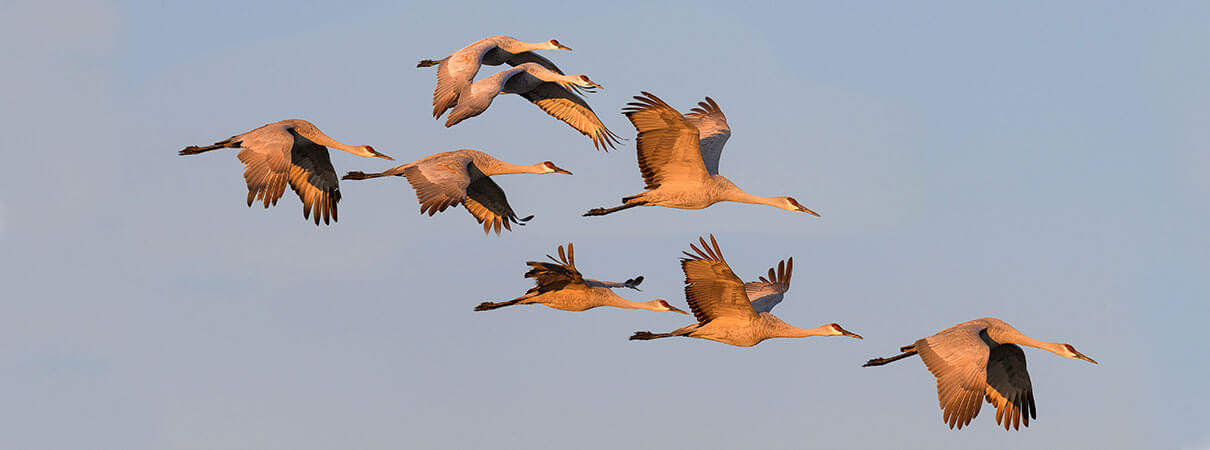
Sandhill Cranes. Photo by Nagel Photography/Shutterstock.
Around 23,000 Sandhill Cranes winter in New Mexico's Rio Grande Valley and their bugling calls are a familiar sound along many parts of the valley from November to February. The best place to observe cranes is the Bosque del Apache National Wildlife Refuge, near the town of Socorro, where it is possible to see thousands of cranes congregating at dawn and dusk. The birds' presence is an incredible conservation success story: In 1941, shortly after the refuge was created, only 17 cranes were recorded wintering at Bosque del Apache. Today there are more than 17,000!
Location: Sandhill Cranes occur in the Rio Grande and Pecos River Valleys in winter, particularly at Bosque del Apache National Wildlife Refuge.
18. Snow Goose / 17. Ross's Goose
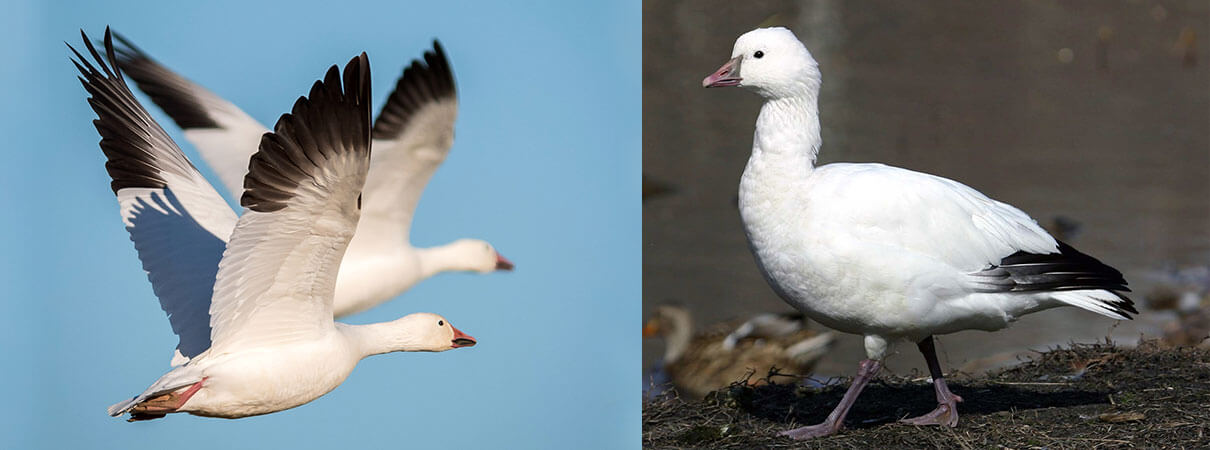
Snow Geese (left) and Ross's Goose (right). Photos (left to right) by Craig Chaddock/Shutterstock and Richard Kretz.
In addition to cranes, tens of thousands of Snow Geese spend the winter along New Mexico's Rio Grande Valley. Bosque del Apache is the center of their distribution in the state and huge flocks of these white geese compete with the cranes for the attention of photographers during winter months. Large numbers of Ross's Geese also winter at Bosque del Apache and trying to pick them out from amongst the more numerous Snow Geese presents a nice challenge for birders. The two species of geese look very similar and often flock together, but with practice it is possible to identify the Ross's by their smaller size, more compact proportions, and blue “caruncles” on the base of their bills.
Location: Snow and Ross's Geese can easily be found at Bosque del Apache National Wildlife Refuge and Bitter Lake National Wildlife Refuge in winter.
16. Pinyon Jay
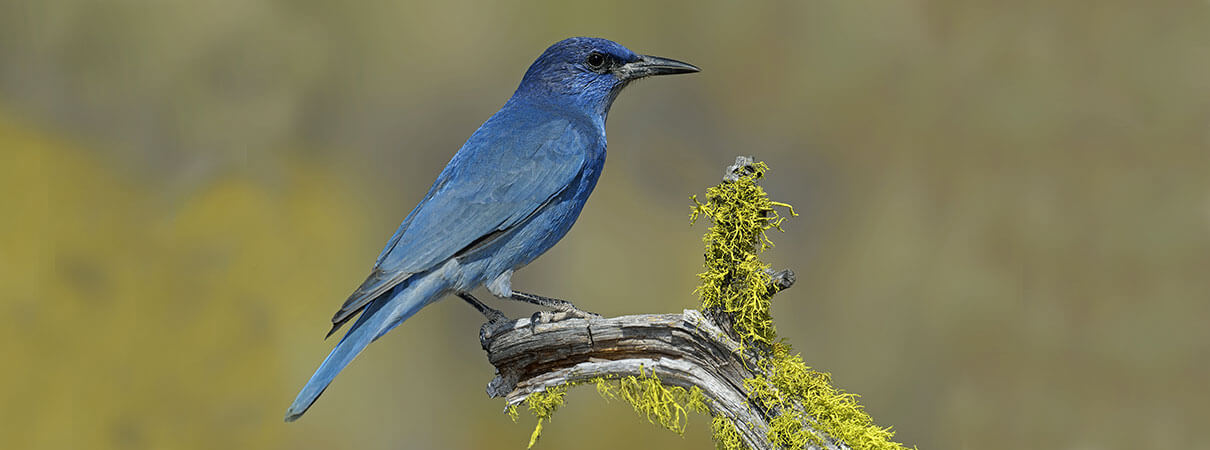
Pinyon Jay. Photo by Tim Zurowski/Shutterstock.
The Pinyon Jay is one of the emblematic birds of the pinyon-juniper woodlands of the Great Basin Desert. Pinyon Jays specialize in the seeds of pinyon pines, and their tendency to collect these seeds and then cache them for future consumption plays a key role in the pines' seed dispersal. Pinyon Jays will travel as far as 7.5 miles to cache seeds, and a single flock has been estimated to cache around 4.5 million seeds in a year! Pinyon Jays are relatively common in northern and central New Mexico, including in areas directly around Santa Fe. They can sometimes be tricky to find, however; flocks move over long distances, and reliably predicting their location is not always easy. Keep an eye out for Pinyon Jays flying across the road while driving through pinyon-juniper habitat, and listen for their distinctive nasal calls.
Location: Pinyon Jays are widespread in pinyon-juniper woodlands of the Great Basin; Bluewater Lake in western New Mexico is often good spot to observe them.
15. Crissal Thrasher
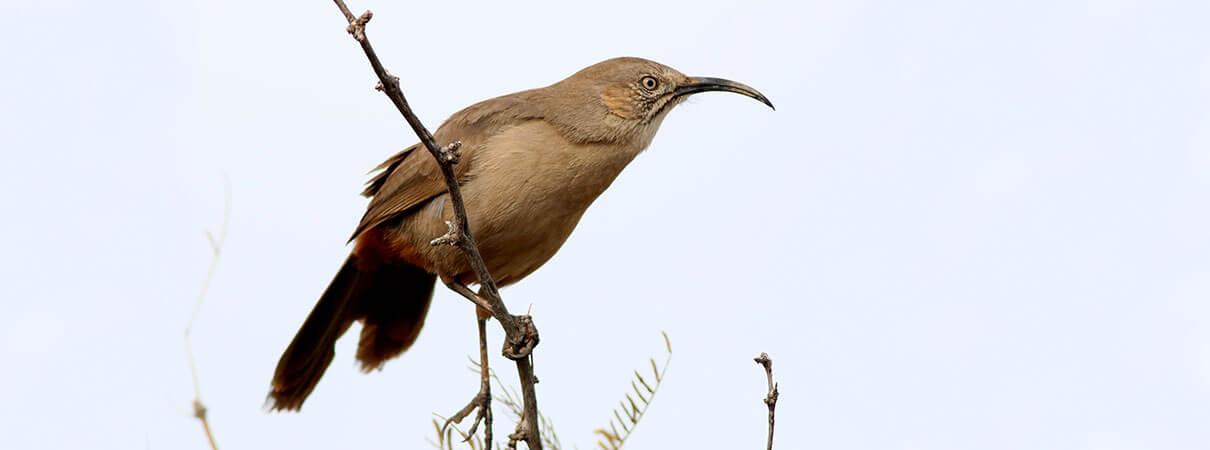
Cristal Thrasher. Photo by Mike Parr.
A long, scythe-shaped bill is the most striking feature of the Crissal Thrasher. In fact, this bill and the way that the bird uses it inspired the term “thrasher.” Thrashers primarily eat terrestrial insects. They use their long bills to “thrash” through dead leaves and dirt while searching for prey. Crissal Thrashers are only found in southwestern deserts, and New Mexico is one of the best places in the U.S. to see them. Despite their preference for relatively open habitats, Crissal Thrashers can be skulking and surprisingly inconspicuous. Listen for their rolling “pitchoree” calls, which are often the best clue to their presence.
Location: Crissal Thrashers are widespread but can be hard to find in deserts and foothills across central and southern parts of the state.
14. Prairie Falcon
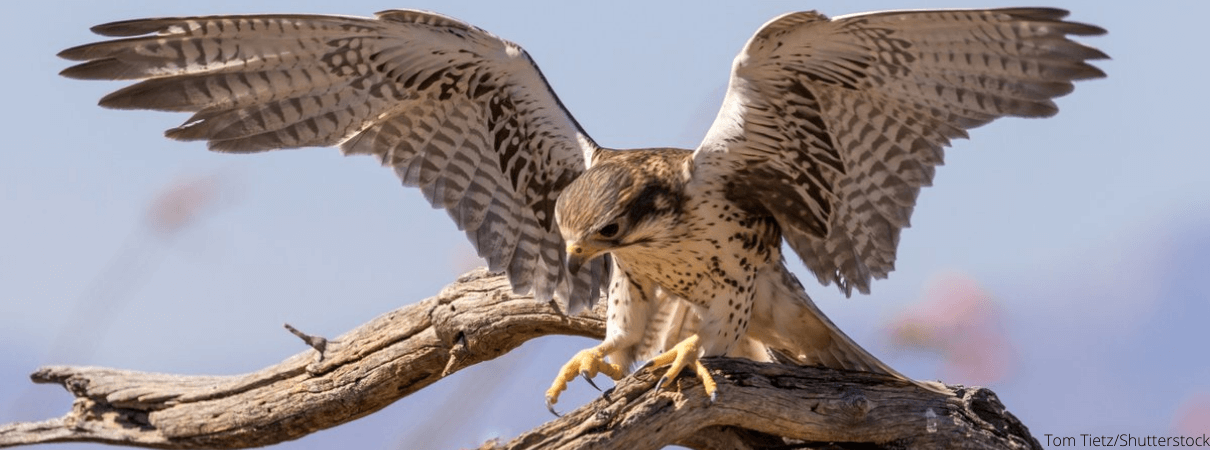
Prairie Falcon. Photo by Tom Tietz/Shutterstock.
Less well-known and seen less often than the related Peregrine Falcon, the Prairie Falcon lives in open environments in the western United States. This species has the smallest range of any U.S. falcon, and is the only falcon unique to North America. Interestingly, the Prairie Falcon's food preferences may have saved the species from near extinction due to DDT in the 1950s and 1960s. DDT accumulates in the tissues of insects and builds up with increasingly deadly effect in the bodies of insect-eating animals. Peregrine Falcons, consumers of insect-eating birds, sat at the top of the DDT food chain and nearly went extinct in North America as a result of the pesticide. Prairie Falcons, however, mostly eat ground squirrels and thus had much less exposure to DDT. Thanks to this, Prairie Falcons not only survived the DDT era but can still be found across large areas of New Mexico and much of the West.
Location: Prairie Falcons can be found in open habitats almost anywhere in New Mexico, including urban settings with appropriate habitat nearby. However, finding them often requires a bit of luck.
13. Gray-crowned Rosy-Finch / 12. Brown-capped Rosy-Finch / 11. Black Rosy-Finch
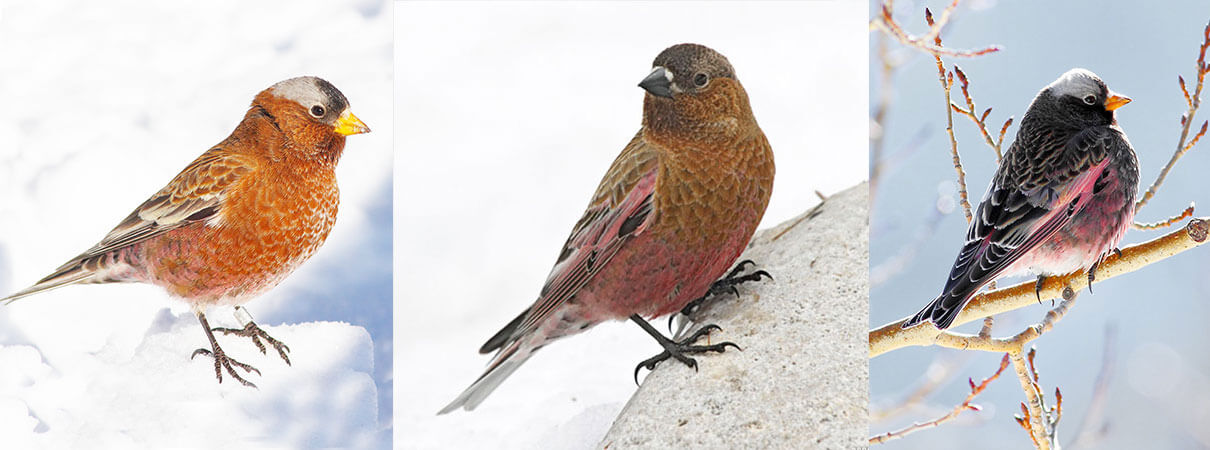
Gray-crowned Rosy-Finch (left), Brown-capped Rosy-Finch (center), and Black Rosy-Finch (right). Photos (left to right) by Greg Homel, Nick Athanas, and Greg Homel.
The North American rosy-finches were once considered to be a single species, together with the Asian Rosy-Finch. The four were split into separate species after studies in the 1990s suggested that their populations, which show many visible differences and breed in different areas, should be re-classified. This led to the declaration of three North American species: Brown-capped, Black, and Gray-crowned Rosy-Finch. Rosy-finches are specialists of extreme mountain environments. Trying to see all three species on their breeding grounds would require reaching high mountain peaks across multiple western states. In winter, however, New Mexico offers one of the best opportunities anywhere to see rosy-finches. Between late November and early March, all three North American rosy-finch species regularly visit feeders near the parking area on Sandia Crest, a one-hour drive from downtown Albuquerque.
Location: Rosy-finches can be found in high mountains of northern New Mexico in winter; Sandia Crest outside of Albuquerque is by far the easiest place to see them.
10. Common Black Hawk

Common Black Hawk. Photo by Greg Homel.
Common Black Hawks are often found near water, where they hunt fish, frogs, and crustaceans. Given this habitat preference, this hawk may seem better suited for life in Florida than in arid New Mexico. But Common Black Hawks are definitely birds of New Mexico, thriving in riparian corridors along the Gila River in the southwestern part of the state. Along with Arizona and some parts of West Texas, New Mexico is the only place in the United States where black hawks regularly breed. In recent years, Common Black Hawks have expanded their distribution along the Rio Grande Valley and are now regularly found as far north as the greater Albuquerque area.
Location: Riparian habitat along the Gila River and southern Rio Grande Valley.
9. Scissor-tailed Flycatcher
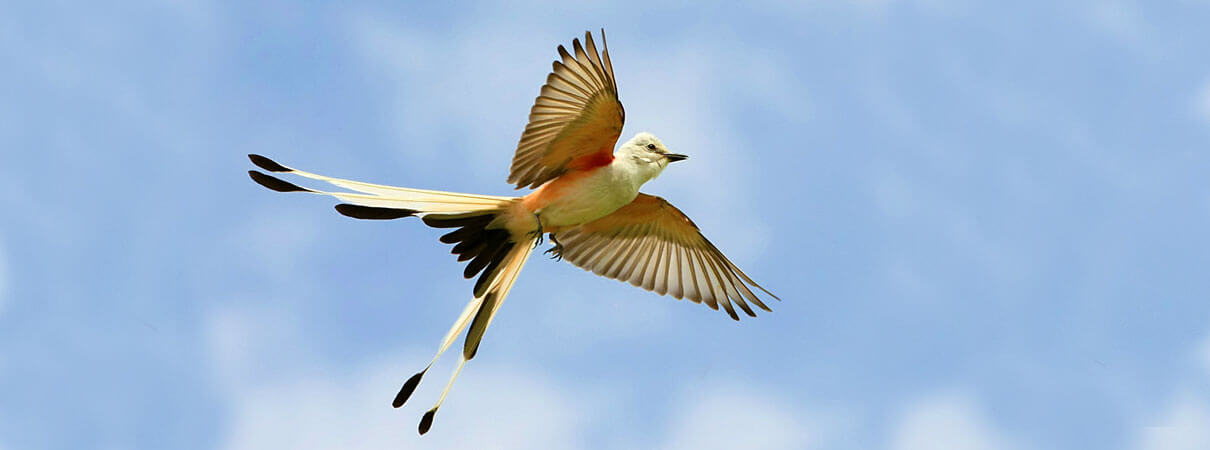
Scissor-tailed Flycatcher Photo by Ken Slade.
In many birds, long and showy tails are the result of sexual selection (peacocks and paradise-flycatchers are good examples of this). In Scissor-tailed Flycatchers, however, both males and females have impressively long, forked tails, which indicates that the tail has a function beyond sex appeal. For these flycatchers, the long outer tail feathers likely help with sudden maneuvers and changes in direction while hunting insects on the wing. The elongated outer tail feathers of Barn Swallows serve a similar function, as does the tail shape of Swallow-tailed Kites. Scissor-tailed Flycatchers reach the western edge of their range in New Mexico, where they occur in the east-central and southeastern parts of the state.
Location: Mesquite grasslands of eastern and southeastern New Mexico.
8. Gray Vireo
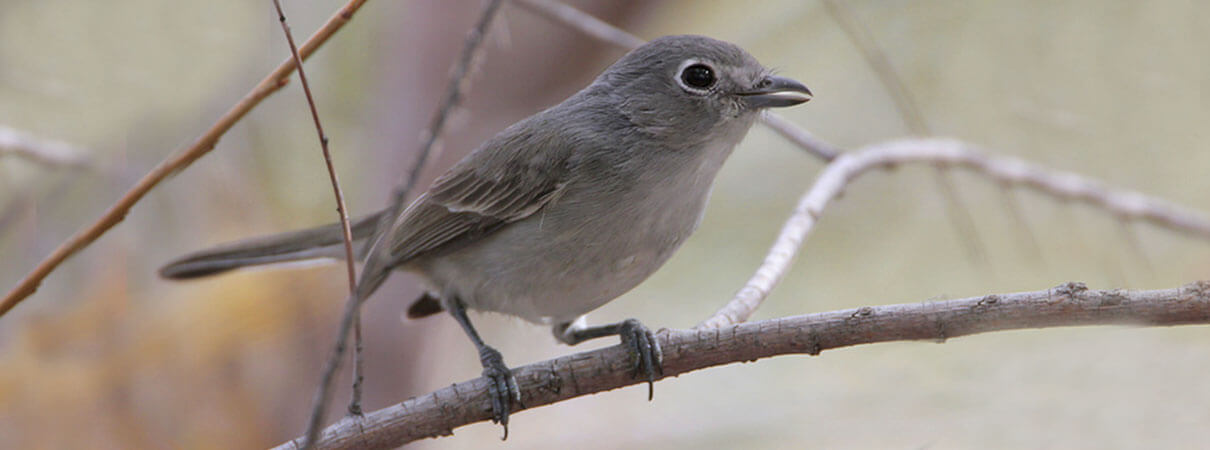
Gray Vireo. Photo by Greg Lavaty.
Gray Vireos are specialists of arid habitats of the Great Basin Desert. Small and entirely gray, they have the dubious distinction of being one of North America's most nondescript birds. While their appearance may be underwhelming, there is a lot to appreciate about their adaptations to desert life. They are able to survive despite rarely, if ever, drinking water, and in mid-summer are one of the only birds of New Mexico able to nest in open pinyon-juniper woodlands where temperatures regularly exceed 100° Fahrenheit.
Location: Pinyon-juniper woodlands across central and southern New Mexico. In the Albuquerque area, the Manzano Open Space is the most reliable spot to look for the Gray Vireo.
7. Red-faced Warbler
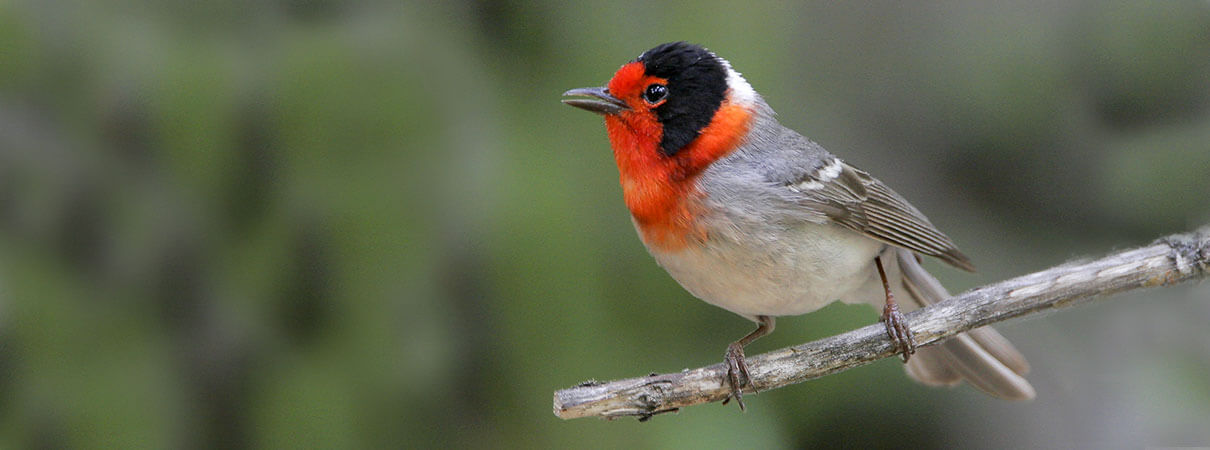
Red-faced Warbler. Photo by Greg Lavaty.
North American warblers are famous for their brilliant colors, so it may come as a surprise that only two of them have any red in their plumage: Painted Redstarts and Red-faced Warblers. Both of these warblers occur in the Southwest. The Red-faced is particularly well-named, with a striking scarlet face and throat. Despite the showy colors, this is one of the least-studied warbler species in the United States. In the U.S., Red-faced Warblers regularly occur only in Arizona and New Mexico — and New Mexico is a great place to observe them. The expansive Gila Wilderness in the southwestern part of the state is a stronghold for the species, where the birds can easily be found in the Gila's densely vegetated pine-oak canyons from April until early September.
Location: Southwestern New Mexico, particularly the Gila Wilderness.
6. American Three-toed Woodpecker
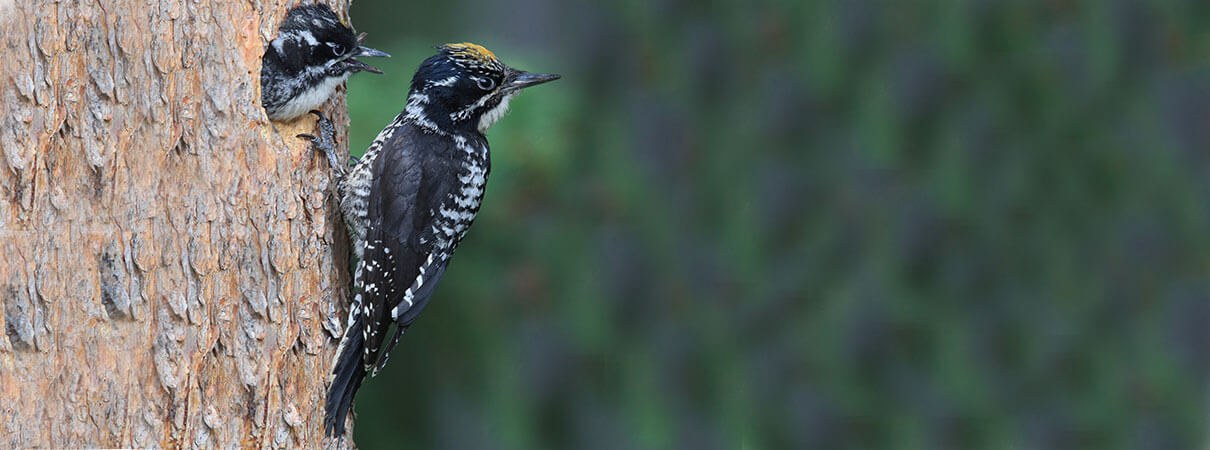
American Three-toed Woodpecker. Photo by Frank Fichtmueller/Shutterstock.
The well-named American Three-toed Woodpecker does in fact have only three toes, one fewer than most birds. For this tree-climber, less is more: Fewer points of contact on the trunk mean that these woodpeckers can leverage themselves farther from the tree, gaining additional striking force. This likely reduces Three-toeds' gripping ability (which may explain why most woodpeckers have four toes) but for these birds, which search for food under the coarse bark of pines, the trade-off seems to be worth it. Primarily birds of northern coniferous forests of Canada and Alaska, American Three-toed Woodpeckers reach the very southern limit of their distribution in the high elevations of New Mexico's mountains.
Location: American Three-toed Woodpeckers can be found in high-elevation coniferous forests, particularly in areas of recently burned forest. Valles Caldera and areas around the Taos Ski Valley are often good places to find them.
5. Bendire's Thrasher
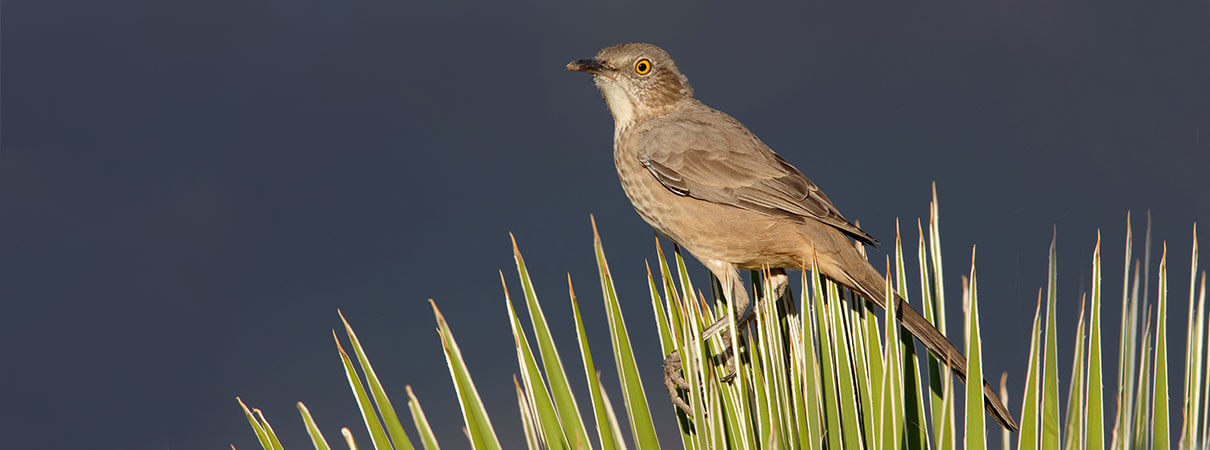
Bendire's Thrasher. Photo by Jacob Spendelow.
Bendire's Thrasher was one of the last North American birds to be described by scientists. Not only is its distribution restricted; it's also hard to identify. In fact, when the ornithologist Robert Ridgway saw the first specimen of the thrasher in 1872, he assumed that it was a female Curve-billed Thrasher and that the collector, Charles Bendire, had made a mistake. Bendire's Thrashers are widely distributed across western New Mexico, but occur in low numbers. For reasons that are not clear, the state's population appears to be declining, and the Bendire's Thrasher is now listed as a species of conservation concern in New Mexico. Carefully documenting observations of this cryptic species and sharing those sightings on platforms such as eBird can help conservationists better understand the thrasher's distribution and decline.
Location: Bendire's Thrashers can be found in Soaptree Yucca grasslands in southern New Mexico and in open juniper woodland with expansive cholla stands farther north. Stateline Road near the community of Rodeo is one of the best spots to find this species.
4. Lesser Prairie-Chicken
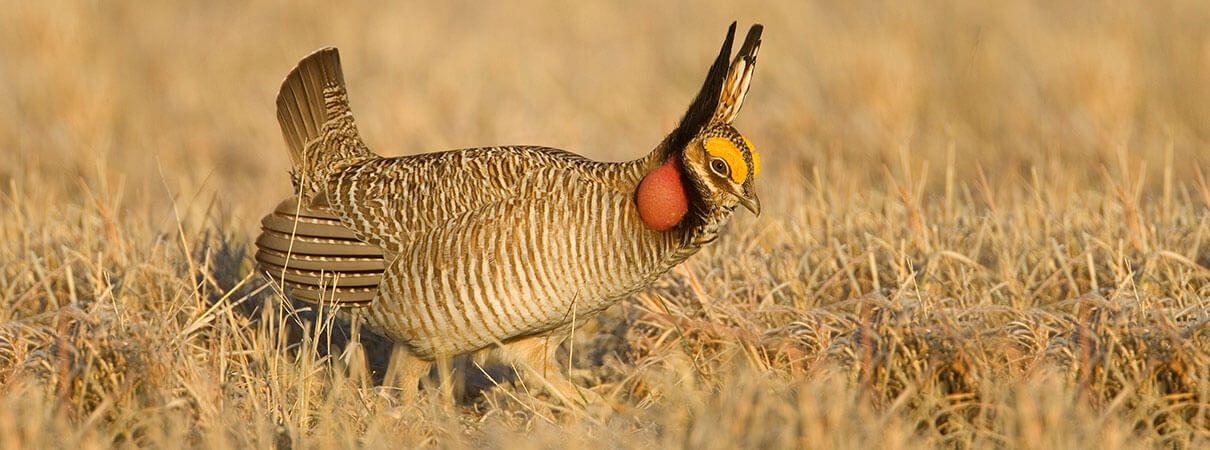
Lesser Prairie-Chicken. Photo by Eleanor Briccetti.
Once widespread across the southern Great Plains, Lesser Prairie-Chickens have disappeared from more than 80 percent of their historic range. Remaining populations face threats from oil, gas, and wind-energy development, as well as habitat loss due to climate change. The town of Milnesand in eastern New Mexico used to host an annual High Plains Prairie-Chicken Festival, but after the state's prairie-chicken population crashed in 2014, the festival was halted. Fortunately, prairie-chicken populations in New Mexico have increased over the past few years thanks to conservation efforts. Hopefully, it will be possible to see more of the spectacular spring displays of these birds in New Mexico again soon.
Location: Lesser Prairie-Chickens can be found in southeastern New Mexico, including The Nature Conservancy's Milnesand Prairie Preserve, but given the prairie-chicken's threatened status, many sites are currently inaccessible.
3. Flammulated Owl
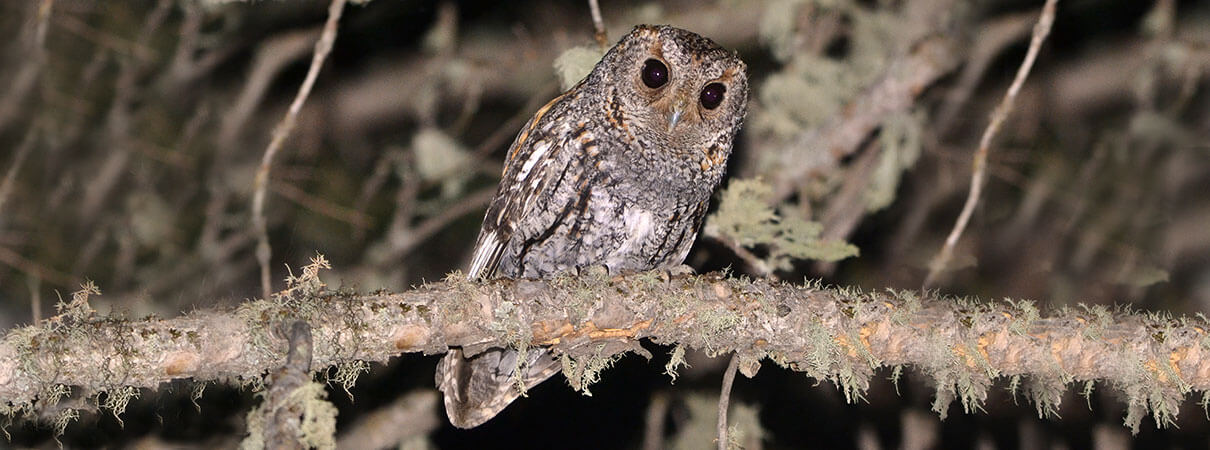
Flammulated Owl. Photo by Brandon K. Percival.
Despite being surprisingly common in the right habitat, Flammulated Owls may be one of the hardest North American breeding birds to see. Small, inconspicuous, and nocturnal, they breed in montane pine forests and specialize in eating insects such as moths and beetles. Flammulated Owls are long-distance migrants, spending winters in Mexico. Given how difficult it can be to find them when they aren't calling, there's still much we don't know about their migratory routes and wintering habits. As recently as the 1960s, scientists were trying to figure out if Flammulated Owls migrated at all. Some researchers hypothesized that they might spend the winter in torpor within their home range. With a large population of Flammulated Owls breeding in the state, New Mexico is a good place to search for these cryptic owls. May and June, when the males call, is the best time.
Location: Flammulated Owls can be found in pine forests, especially those dominated by Ponderosa Pines, and higher elevation mixed conifer-aspen woodland. The Sandia Mountains outside of Albuquerque are a particularly good spot to see these owls.
2. Unexpected rarities

Sungrebe. Photo by Glenn Bartley.
In addition to regularly occurring species, the birds of New Mexico include many rare avian visitors, commonly known as “vagrants.” These have included the Orange-billed Nightingale-Thrush, European Golden-Plover, Eared Quetzal, Fan-tailed Warbler, and Long-billed Murrelet (the latter was thousands of miles from its usual home along the northern Pacific coastlines of Russia and Japan). And that's not all: No less than four Piratic Flycatchers have been spotted, along with the only U.S. records of the Sungrebe and Rufous-necked Wood-Rail. Rarities can be hard to predict, but it's always worth checking recent bird observations using eBird to see if anything unusual has been reported.
Location: Cross your fingers and check the rare bird alerts!
1. Species yet to be found
While New Mexico has one of the longest species lists of any U.S. state, it gets less attention from birders than many other states. One way of measuring how many people bird in a state is to look at the number of observer checklists that have been submitted to eBird. Despite its impressive diversity, New Mexico is in the bottom half of U.S. states when it comes to eBird checklists (ranking 28th overall as of March 2021). Does this mean New Mexico could have some surprises waiting to be uncovered? Perhaps! Given that New Mexico tends to have fewer birdwatchers, it could be a great destination for anyone hoping to discover new state or county records while birding.
Location: Try locations and counties with fewer eBird checklists.
How can I help?
We all can do our part to protect North America's birds.
American Bird Conservancy and our Joint Venture partners have improved conservation management on 6.4 million acres of U.S. bird habitat — an area larger than the state of Maryland — over the last ten years. This is a monumental undertaking, requiring the support of many, and you can help by making a gift today.
Policies enacted by Congress and federal agencies, such as the U.S. Fish and Wildlife Service, have a huge impact on America's birds. You can help shape these rules for the better by telling lawmakers to prioritize birds, bird habitat, and bird-friendly measures. To get started, visit ABC's Action Center.
Finally, don't overlook the impact you can have at home. Living a bird-friendly life can have an immediate impact on the birds around you. Doing so can be as easy as adding native plants to your garden, avoiding pesticides, and keeping cats indoors. To learn more, visit our Bird-Friendly Life page.
 | John C. Mittermeier is the Director of Threatened Species Outreach at ABC. He works with ABC's partners in Bolivia and helps to lead ABC's lost birds and bird trade initiatives. |
 | Born and raised in New Mexico, Matt Baumann is an active member of the New Mexico ornithological and birding community as well as one of the state's eBird reviewers. He enjoys exploring New Mexico to better understand its avifauna. |


















































